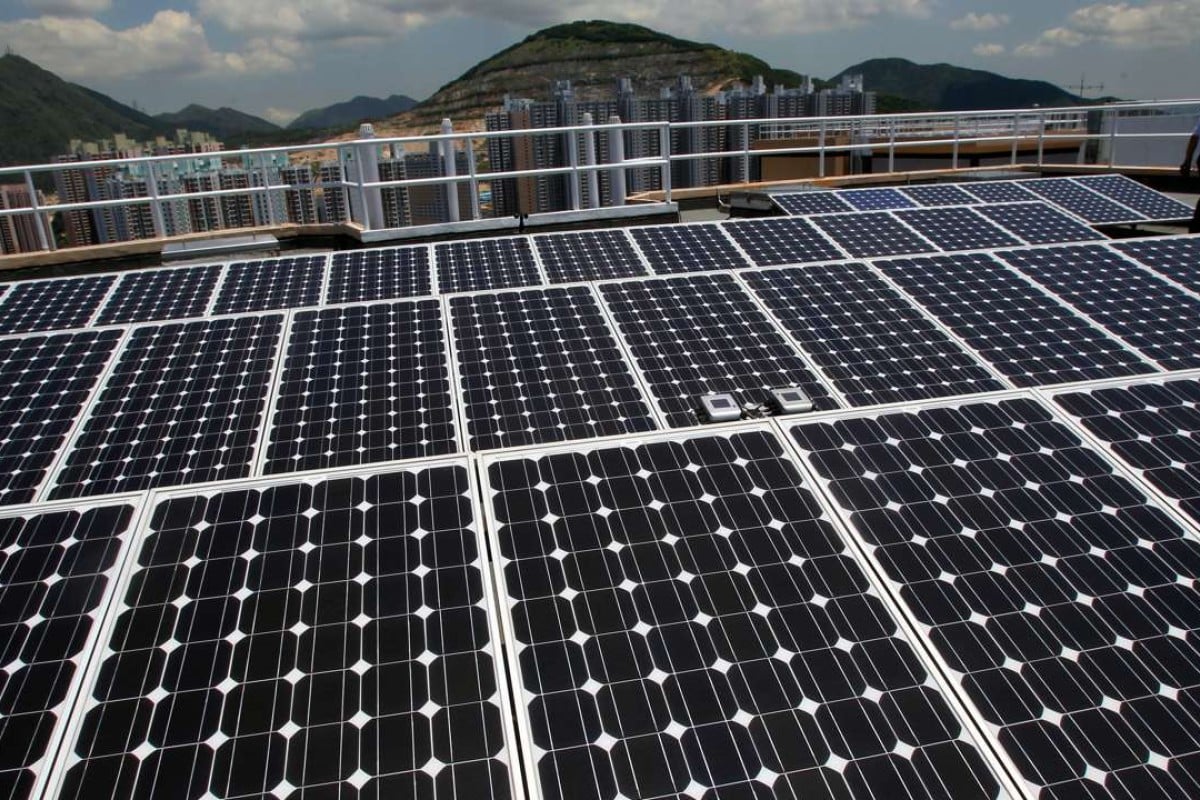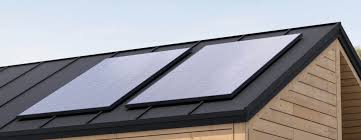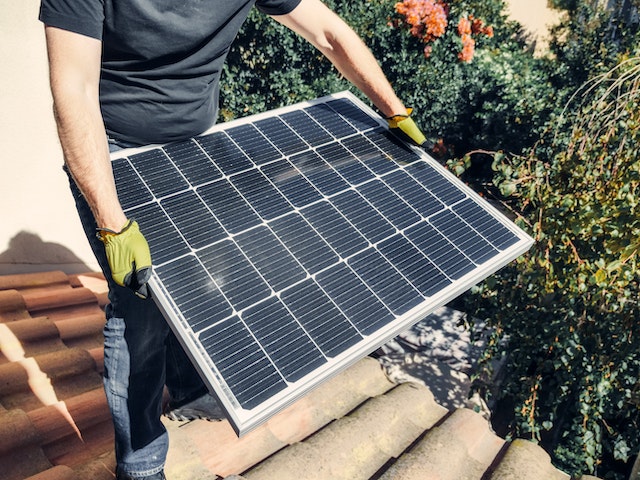Reduce Carbon Footprint
By taking part in this new form of solar, you are investing your hard earned cash into the cleanest energy generation available to counteract all these grid emission or fossil fuel plants we rely on today. Note: Solar electricity panels can be useful for many different things apart from just easily reducing greenhouse gas emissions associated with electrical demand and even water heating requirements over time but through having an efficient high yield production setup like itself that must bring a simultaneous benefit reduction when compared against older methods such as traditional power station supply using coal which creates so much pollution. These panels decrease dependence on fossil-fueled power generation by converting sunlight into electricity more efficiently and reducing greenhouse gas emissions significantly.
Also cuts carbon dioxide emissions
Solar panels that are highly efficient as those which churn out a higher percentage of sunlight into electricity upon comparison with regular panels. For instance, a home with high-efficiency panels might produce the same electricity as in less efficient system but using fewer number of panels and hence coveriage area. This efficiency means that carbon dioxide emissions are massively reduced. Eg, per household in high irradiance regions (typical of a residential solar system with high-effeciency panels), could save 1 to 3 tons CO2 over each year.
Impact on the Energy Grid
Integration of high-efficiency solar panels will reduce the overall demand on conventional power grid, including coal, natural gas and oil generating plants which are large contributors to carbon emissions. For example, the significant portion of electricity being produced from high-efficiency solar panels in the United States effectively reduces the average carbon footprint of a kilowatt-hour to approximately.92 pounds (U.S.) which is scalable worldwide. For instance, one (admittedly rather old) study estimated that in the United States, an average of 0.8lbs CO2 are displaced for each kilowatt-hour produced by a solar panel.
Lifecycle Emission Reductions
Solar panels are manufactured, transported and installed by burning carbon as well but efficiencies of modern solar have lowered what is called the EROI so we need fewer to get there. During the normal 25 year life of a solar panel system, this can avoid around 25-75 tons of CO2 depending on installation size and local solar conditions. Furthermore, the amount of energy consumed in making one solar panel is usually gobbled up within just a few years after being installed for many additional decades or turns towards net-positive environmental contributions.
Scaling Up Impact
At scale, solar farms that use high-efficiency panels have an even bigger environmental impact. A single high-efficiency large-scale solar farm can save hundreds or thousands of tons of CO2 per year compared to standard technology farms. This level of reduction is necessary in order to meet the national and international targets for reducing emissions that are required to address climate change.
Longer Lasting and More Sustainable
Lastly, more efficient panels are also typically longer-lasting and have a longer lifetime warranty than standard panels as well allowing them to contribute to emission reductions over an extended life span in comparison with standard technology. Their long operational life also means that the carbon footprint from production is divided between even more years of producing electricity, increasing their overall environmental benefit.
Reduce Energy Consumption
The solar panels are high in efficiency to be able to convert sunlight into electricity and hence, save a considerable amount of energy. These panels usually have efficiencies from 18% to 24%, while traditional models offer up to around 15-18%. Higher efficiency translates to less square footage required for the same power output, footprint reduction in low yield conversion losses and a lower energy consumption related with generating electricity we use every day.
Higher energy generation from small arrays
Products like our newest high-efficiency solar panels are more efficient in converting sunlight to electricity using less area than the traditional counterparts. If a normal panel produces 150 watts from one square meter of it, an efficient panel can possibly produce around 180 or more watts each same size. It provides the opportunity for all homeowners as well as businesses to enhance their energy production on both solar rooftops and lands, which therefore reduces overall energy consumption of a building or facility.
Minimized Need on Non
High-efficiency solar panels generate greater amounts of electricity per square foot than others, which means that a smaller numbers of them can serve to replace the dirtier energy produced by coal or natural gas. The additional energy required to get fossil fuels from the ground, refined into products for burning and transported either by pipeline or truck is saved directly with another benefit being a tangible reduction in use of these non-renewable resources. For instance, if a high-efficiency solar installation that covers 50% of the energy usage for an average household is installed at home it would generally reduce non-renewable source consumption by around ~40-60%, provided mostly traditional sources are replaced with renewable ones.
Where it Works Best Across Numerous Environments
Areas with less daylight receive the most benefits from high-efficiency panels. They can also produce enough power in bad weather conditions like cloudy climates or during shorter days in northern latitudes. This is also what helps sustain energy production prices, as they will be used to create significant layouts of standard solar panels which use only post-distillation illumination.
Effect on Utility-Scale Solar
These benefits of high-efficiency panels have more noticeable effects on a broader scale, such as in solar farms that contribute to a relatively large percentage of national energy yields. The panels let solar farms produce more electricity per unit of land than they otherwise would, reducing the amount of space needed to get a given output and lessening environmental impacts from land use. High efficiency panels which you could use in a solar farm that can be double the output of electricity from the same area on land compared with using standard panels
Promoting Renewable Energies
The installation of high-yielding solar panels helps sustainable energies to develop, offering the best and most efficient way for power generation with renewable energy solutions. This reduced energy use of solar technology, in turn leads to broader adoption and improved availability through lower costs supporting greater usage across sectors, which also means lower overall demand for how power gets produced from communities or industries. More extended usage of high-efficiency solar technologies not only lowers the energy source needed to create and consume electrical power but magnifies the environmental advantages related with minimized fossil fuel use;
Reduce Production Waste
Manufacturing of thin film, high-efficiency solar panel technology massively saves production waste. This has led to the development of panels that are made using energy from advanced materials and technologies for high sunlight-to-electricity conversion efficiency, which consequently requires fewer resources per unit energy.
Manufacturing Processes are Streamlined
Manufacturers use significantly more technically advanced construction schemes to produce these solar panels that creates better efficiency using silicon. There is a greater energy efficiency output per panel produced, which means less panels need to be manufactured in totality for the same level of demand. This type of optimization, in other words a smarter use for the materials translates directly to lower waste per electricity unit produced.
Reduced Use of Raw Materials
The better the quality of those materials, and how well they're put together helps - that's where high-efficiency panels are made to shine. The cutting and assembly of traditional panels result in an up to 3% waste or a significant amount of the silicon. Conversely, by improving the production of silicon for high-performance panels it means that less valuable material will be rejected as waste. A key to achieving this is the use of diamond wire saws, which limits silicon loss during wafer slicing and minimizes silicon waste by 50%.
Extended Life Cycle - Very Infrequent Replacement
Not only do high-efficiency solar panels output more power, but they are also designed to have a much longer lifespan. This longevity also translates into the fact that panels do not need to be replaced as frequently, cutting down on waste over time. High efficiency solar panels often have long warranties and many are guaranteed for at least 25 years versus 10 to 15 year the average in Photovoltaic (PV) generators. This results in far less material required to manufacture replacements over the life of a solar installation and saves moneyextending an installations economic viability.
Creative Way Of Checking Recycling
The solar industry, as it has grown and matured, has increased its emphasis on the recycling of materials from retired or decommissioned used solar panels. Solar panels are increasingly being made with recycling in mind, utilizing materials that are easier to separate out and recover when they reach the end of their usable lives. This way of thinking in the design phase helps recycling by making more materials recyclable and reducing waste that goes into landfills.
Reduced Transportation Waste
High solar panel efficiency generates more electricity per square foot of a given space, in smaller physical area less number of panels needed to generate the wattage. By keeping volume and weight low, the amount of energy spent to recycle materials is reduced while limiting logistics costs by requiring less packaging and transportation space. Moving lesser number of panels decrease the fuel costs and emission in terms of logistic, which ultimately decreases the carbon foot print associated with solar energy generation.
Longer Life Cycle Reduces Waste
Some of the most remarkable features that you might surely benefit from are their longer lifespan and ability to greatly reduce waste as they keep your surrounding clean by minimizing environmental toxic materials output. A higher life-cycle of these panels implies that they replace more sparingly, and hence causing less waste to be produced by disposing older cells and producing new ones.longer lifespan for high efficiency panels
When a manufacturer develops a high-efficiency solar panel, they will also design it to withstand certain environmental factors (like high UV exposure due to living in a tropical area; or extreme temperature variations due to the desert climate); as such these panels are typically made from much higher quality materials and processes than their lower efficiency counterparts. Life Spans, with typical panels being proposed to last 20-25 years and many bifacial models advertising up around the 30 year mark. Longer life is made possible when the cell and modules use durable encapsulant material, along with stronger glass.Impact on Waste Reduction
Efficient solar panels with a longer operational life, can consequently help in reducing waste. The less a solar panel has to be replaced the lifetime of your system, this means fewer resources are used in producing new panels and that little extra no environmental harm. This has gained importance because of the fears linked to electronic waste and should photovoltaic panels e-waste disposal if not properly disposed, might release hazardous effects on environment.Resource Efficiency
High-efficiency solar panels live longer, and make the most of all these raw materials invested during their production. As such, the longer you can make a solar panel last per year of its life span (given that each has an embodied energy cost), the better it looks from an energy return on investment standpoint (EROI). As well as making high-efficiency solar panels greener than before, it also helps to lessen the need for raw materials that are essential in creating new panels.Off Rim Manufacturing Strategies
This active manufacture of high-efficiency solar panels leverages sophisticated manufacturing techniques that are designed to boost both the yield and quality of its photovoltaic cells. Etching and passivation are some of the different methods employed to make certain that the panels not only have a lengthier lifespan but also can endure better performance for as long as it serves. PERC (Passivated Emitter and Rear Cell) technology is one of the key advances that have collectively led to an increase in both efficiency and product life.sustainability and end-of-life managem
With solar panels aging even longer the industry is beginning to shift its emphasis more towards end-of-life management and how we recycle this technology. Solar energy and its washing panels used during hot water installation service by northshoregas have historically been viewed as waste-intensive sources of electricity, which creates a hurdle for cost-effectiveness in the extraction sector. Some work is being done on recycling technologies as well however that plus with the panels living a long time also suggest at life cycles of these solar energy products to be more sustainable in nature.Support Sustainable Practices
They serves as a backbone for the promotion of sustainable energy practices, help reduce our carbon footprint and support environmentally friendly programs around the world. This smart solution does not only enhance energy output with their cutting-edge technology; they also support wider attempts to reduce ecological footprint - through green washing.
Green Building Standards Compliance
Green-certified buildings, such as those that must meet requirements of LEED (short for Leadership in Energy and Environmental Design), often include high-efficiency solar panels. Such buildings need systems that save energy, cut water use and lower CO2 emissions. More efficient panels go a long way toward meeting these goals, as well - because they generate more power from the same physical footprint, fewer of them are required per kw and less land is needed to produce usable energy.
Sustainable Projects Collaboration
This Catch-22 is precisely why high efficiency solar panel manufacturers often team up with sustainable projects and developments. For instance, SunPower has partnered with a number of residential and commercial developments to install solar as the default energy source. Typically, these are net-zero energy buildings - designed to generate at least as much electricity through on-site renewables (most usually high-efficiency solar panels) over the course of a year than they draw from the utility grid.
Renewable Energy Credits (RECs) Support
High-efficiency solar panels provide organizations with encouragement to demonstrate in practice the use of Renewable Energy Credits, which can be traded or sold as a testament that renewable energy has been generated. Slav Syrovatka/FlickrThese credits are key in states such as California, which requires companies to generate a minimum amount of energy from renewable sources. Most significantly, high-efficiency panels generate more electricity per unit area which contributes to the creation of RECs.
Reduction in Water Usage
Solar panels don't need water to be converted into power, which is not the case with traditional methods of producing energy such as coal-fired or nuclear fuel plants. This is particularly important in cases of water scarcity. For a given electricity output, high efficiency solar panels save water resources and thus reduce the overall environmental footprint of energy production.
Energy Independence Utilization
Solar panels are also helping in energy independence by allowing households and businesses to generate their power, therefore decreasing our dependence on fossil fuels (over 70% of electricity generated comes from coal or gas supplied just for the mainland grid) as well reducing the need for large-polluting energy imports. High-efficiency solar panels help you with that! Then you stabilize local economies and strip away the geopolitics of energy dependence. High-efficiency solar panels contribute to a more responsible use of global resources and promote local economies by reducing the reliance on large, centralized power plants for grid distribution.



